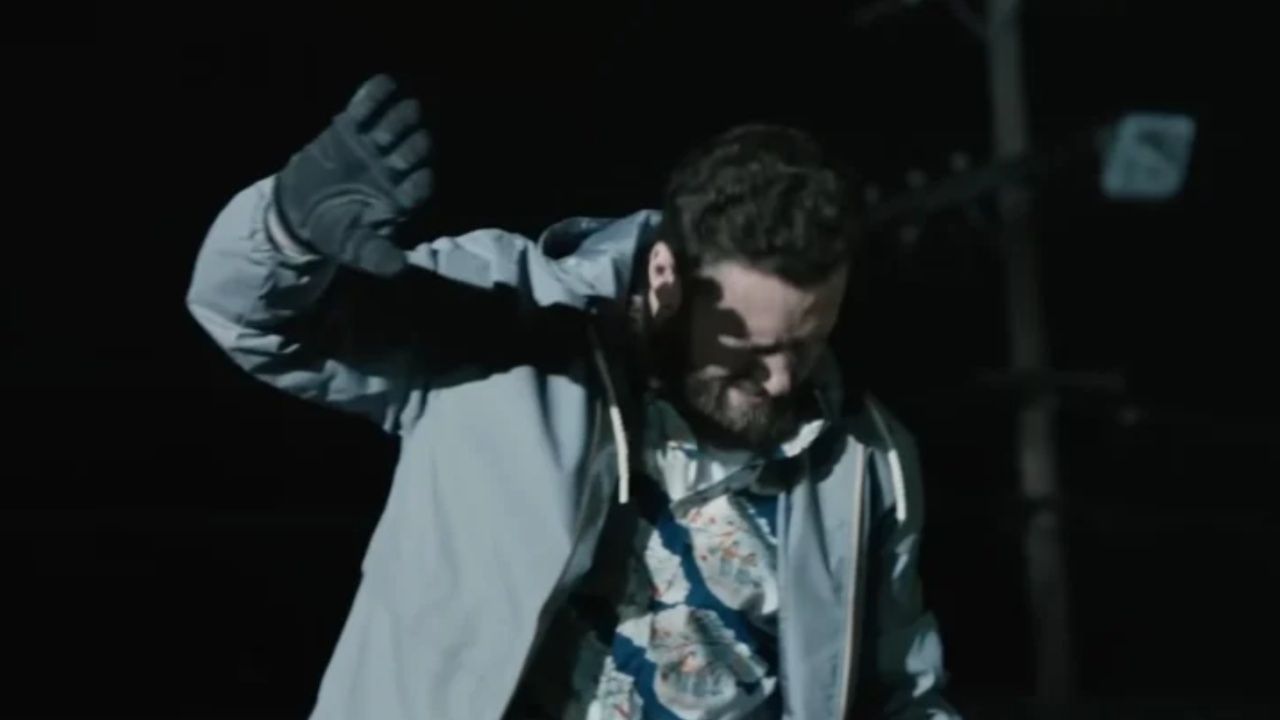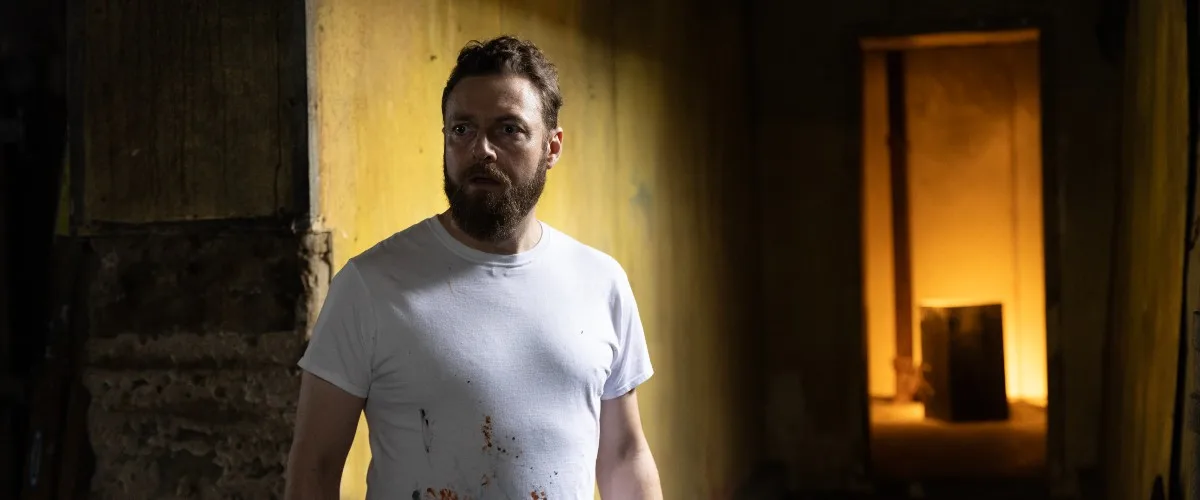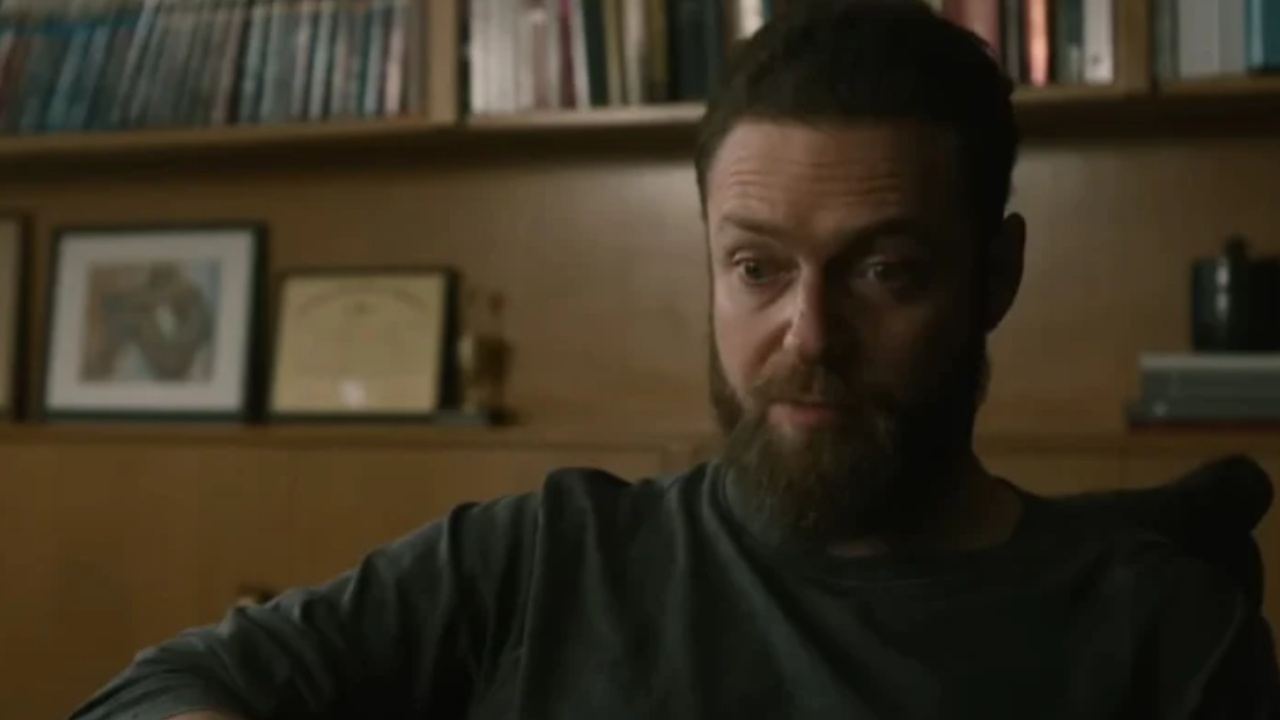Descendent (2025) is a film that blends elements of alien encounters with psychological drama. Often described as a pseudo-alien, parenthood-anxiety story, it has garnered attention for its ambiguous narrative and enigmatic conclusion.
The film’s central focus is on the protagonist, Sean, a security guard burdened by personal and familial pressures. His wife is pregnant and experiencing complications, including pre-eclampsia, intensifying Sean’s anxiety about becoming a father. Haunted by the deaths of his parents, his mother in childbirth, and his father by suicide, Sean struggles with feelings of inadequacy and unworthiness.
When a promotion at work falls through, his sense of failure deepens, creating a fertile ground for the strange and terrifying events that follow. The line between reality and delusion becomes increasingly blurred.

Sean’s Alien Abduction Triggers Hallucinations, Trauma Confrontation, And Emotional Transformation Through Visions
Sean’s life takes a dramatic turn when he notices a mysterious light in the sky while working on a rooftop. Moments later, he is seemingly abducted by aliens and subjected to invasive experiments aboard their spacecraft. Upon his return, he is changed: he hears distant voices, experiences vivid hallucinations, and encounters visions from his past, including what appears to be his childhood dog. This alien encounter acts as a catalyst for his emotional transformation, shifting the story from conventional horror into a surreal psychological exploration.
As Sean’s visions intensify, his mental and physical state deteriorates. He begins creating disturbing sketches of a father and son, old buildings, and symbols of loss. His behavior strains his relationship with his wife, and therapy provides little relief. Eventually, his hallucinations culminate in horrifying images of his wife and unborn child lying dead, representing his deepest fears.
After a collapse, Sean awakens to fragmented memories of his childhood home and a haunting encounter with his deceased father. The audience is left to question whether the events are supernatural, psychotic, or both. His inner turmoil mirrors his external disintegration.
One of the most emotional sequences occurs when Sean revisits his childhood home and finds his father alive. Their reunion is bittersweet, culminating in a gunshot as his father takes his own life, echoing Sean’s earliest trauma. This moment becomes a turning point, forcing Sean to confront his lifelong pain, loss, abandonment, and guilt.
The alien abduction serves as a form of advanced therapy, orchestrated to help Sean process his trauma. When he awakens again, seemingly back in the real world, his surroundings appear normal, his wife is safe, and his sketches hang above their bed, symbolizing the lingering impact of his ordeal.

Sean’s Sketches Reveal Trauma, Healing, And Emotional Growth Through Confronting Past Fears
Sean’s artwork functions as a visual metaphor for his healing journey. Each drawing of his childhood home, father, and haunting imagery represents pieces of suppressed trauma coming to the surface. Over time, the sketches gain clarity, reflecting his gradual self-understanding. By the end, they symbolize acceptance and survival rather than lingering fear.
At the heart of Descendent lies Sean’s anxiety about fatherhood. He fears losing his wife and child during childbirth, repeating the tragedy of his mother, and he fears failing like his father. These anxieties manifest in paranoia and protective behaviors, such as purchasing a gun, illustrating both his desperation for control and his struggle to process trauma. Healing requires him to relinquish this illusion of control, understanding that emotional openness, not physical defense, is the key to protecting his loved ones. Parenthood becomes a chance for redemption.
A cryptic phrase, “Break Free From Aster,” scrawled on a wall, initially confounds viewers. The message is tied to Sean’s childhood street, symbolically urging him to release himself from the emotional prison of his past. Supporting characters, such as the psychologist and the rescuer at the film’s conclusion, reinforce the story’s interplay between the physical and psychological, guiding Sean toward recovery.
By the film’s end, resolution comes not from external revelation but internal reconciliation. The alien abduction and the simulated experiences compel Sean to confront and integrate his unresolved childhood trauma. Though his external world appears unchanged, he has undergone a profound personal transformation. The sketches above his bed serve as lasting reminders that trauma can be understood and incorporated into one’s life. Beneath the sci-fi premise lies a deeply human story about grief, guilt, healing, and the courage to become a better parent than the one he lost. Ultimately, Sean’s abduction becomes his path to redemption.



